The very moment a fashion designer is struck with an idea to create is both powerful and incredibly fragile – it’s a glimpse of what could be, but also what could never be reached. This is when the true tension begins: between heartfelt inspiration and the practical demands of crafting their vision.
The fashion muse – embodied by either the mannequin or the model – usually serves as both the starting point and ending point of the creative journey. First, the designer imagines the garment with the muse in mind, and then, the creative journey ends when the muse brings that design to life through its wear.
Yet this singular muse often fails to represent the vast diversity of groups, especially those with disabilities or from different religious and cultural backgrounds. In Western fast fashion, clothing designs can often become entrenched in narrow perceptions of what women are expected to wear, disregarding a range of sizes, religious affiliations, and individual styles.
Countless unique fashion ideas and personal tastes get sketched out, only to face the hurdles of translating them into reality. How, then, can AI technology bridge this gap between inspiration and implementation?
AI’s Role in Fostering Inclusivity and Preserving Indigenous Fashion
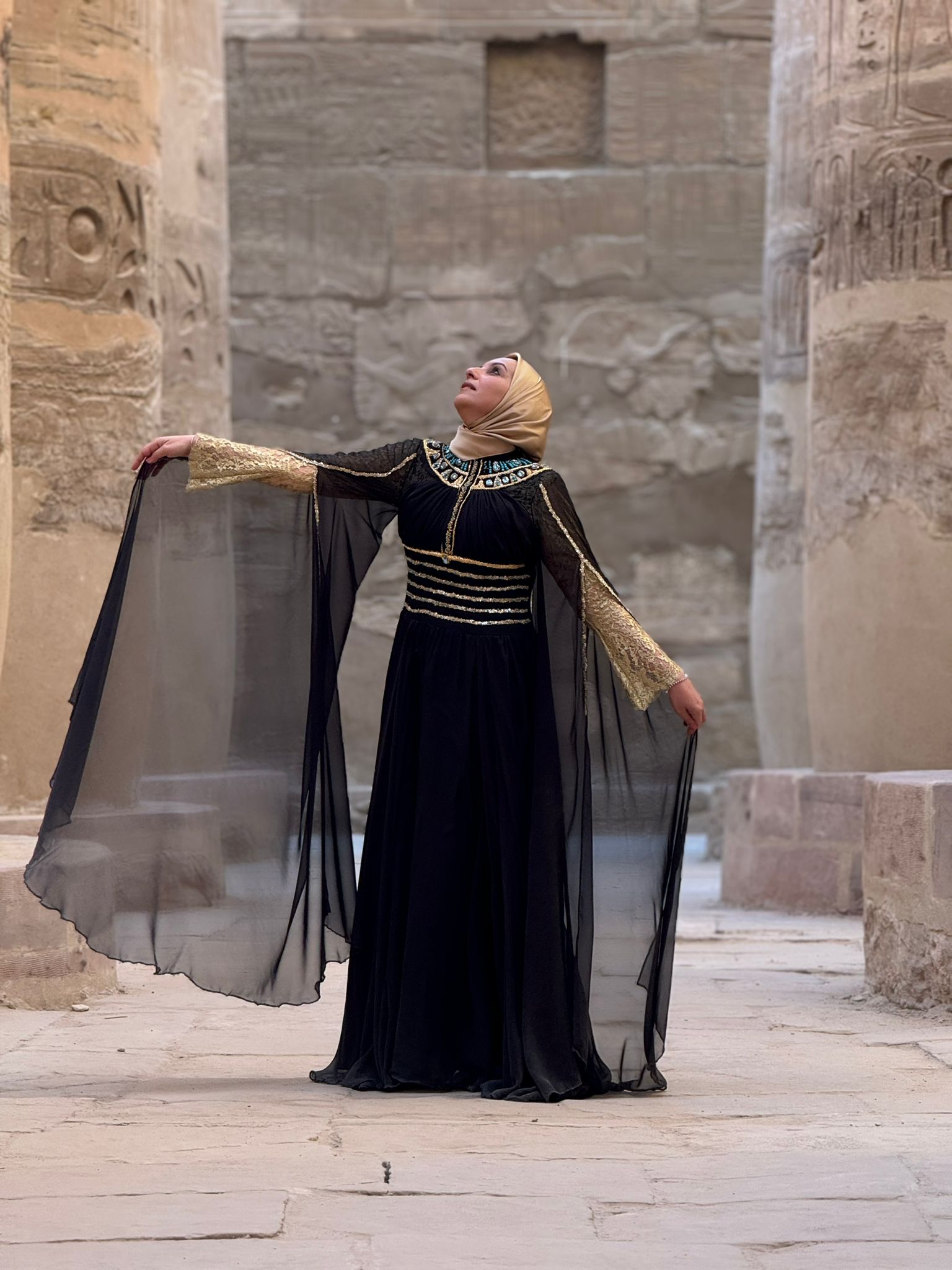
Muhammad Mahmoud Al-Nubi Al-Hafni
In the realm of fashion, there’s a growing wave of interest in leveraging AI and augmented reality to transform people’s interaction with style. These technologies hold the potential to enhance body positivity, promote diversity in representation, uphold ethical sourcing standards, and promote fairness in recruitment.
For instance, AR virtual try-on tools empower users to see how clothes look on different body types, which can help promote body positivity. AI-generated models can also represent a more diverse cultural landscape, including indigenous and hijabi fashion. This broader spectrum caters to a wider range of tastes and ensures everyone feels included and represented.
In Egypt, the struggle to localize the fashion industry and preserve traditional and indigenous fashion stems from various factors, notably the scarcity of resources and tools essential for designing and promoting these unique designs.
Identity erasure is also a commonly discussed topic, and a challenge Egyptian communities are working to overcome constantly. Whether it’s stereotypical representations in movies or in art, the Egyptian identity is often appropriated and misrepresented by those who are not from or part of the culture.
Reflecting on these challenges, there are ongoing concerns about guaranteeing that Egyptians are the ones portraying their own visual identity. AI technology emerges as a valuable tool, empowering individuals to tailor their fashion choices and convey ancient Egyptian aesthetics and perspectives authentically.
Fashion’s Latest Muse: Our Authentic Identity
Rather than drawing inspiration from an external fashion muse for the creation of a particular dress, a recently unveiled AI-designed dress, named ‘Eternal Elegance‘, exemplifies how fashion’s newest muse is one’s genuine and unique identity.
The AI-crafted dress, which was unveiled at the iconic Karnak Temple, demonstrated how Egyptians can reclaim their identity by supplying AI with details about their fashion tastes and unique styles, preserving their historical imagery and tradition.
The story of the AI-designed dress stemmed from a common experience for many women: the struggle to find the perfect outfit for a special occasion.
As Essraa Nawar prepared for the 20th Anniversary of the Kafer EL Zayat for Pesticides and Chemicals, she realized she lacked options that not only aligned with her personal hijabi style but also resonated with her Egyptian identity.
As an Egyptian-American co-leading AI effort at Chapman University, she chose to take the unconventional route and explore how the ethical use of AI can help champion diversity and empower Muslim women in fashion.
“AI possesses incredible capabilities, yet it will never replace humans. We are responsible for providing AI with precise information to prevent biases and stereotypes about our identity,” Nawar explains to Egyptian Streets.
Collaborating with Ehab Ahmed Tawfik, a fashion designer and an AI prompt engineer, the AI-designed dress was made with specific prompts to merge ancient Egyptian culture with modern fashion.
Although anyone can create prompts, the crucial difference lies in who is writing them and whether they genuinely reflect the culture of the people they represent.
For instance, Tawfik employed prompts to mimic essential ancient Egyptian designs. These included the high neckline, reminiscent of the regal attire of ancient royalty, and the flowing garments depicted in ancient Egyptian art, featuring layers of sheer gold and turquoise fabrics.
“Yet AI alone doesn’t capture all the distinctive skills of Egyptian handcrafts and knowledge that only Egyptian women designers possess and comprehend. Even after the AI designs, the mastery of handcraft remains essential for perfection,” Nawar emphasizes.
This is why Nawar collaborated with Thouraya Dsouli, a celebrated Egyptian Tunisian couturier with over thirty years of experience in traditional handcrafted couture. Serving as the main couturier, Dsouli integrated handcrafted designs into the dress, bridging tradition with modern technology. The Nefertiti bag was also designed by two local designers: Maha Salem and Nehal Kamar.
So, what implications does this hold for Egyptian fashion? Nawar suggests that this AI-designed dress could be a prototype for upcoming designers, illustrating an ethical and considerate application of AI rooted in values and identity preservation.
“I’m involved in a focus group focused on AI literacy and promoting responsible AI usage, and this project resonates strongly with my values,” she explains. “While it highlights the potential of AI, such as promoting more inclusive fashion, it also urges us to engage in discussions about AI literacy and how the data we provide to AI safeguards our cultural heritage.”
As the world remains captivated by ancient Egypt, there’s a looming concern of cultural appropriation. “When we Egyptians travel abroad, we recognize the significance of our ancient heritage even more. That’s why it’s crucial to safeguard and advocate for an authentic portrayal of our cultural history.”

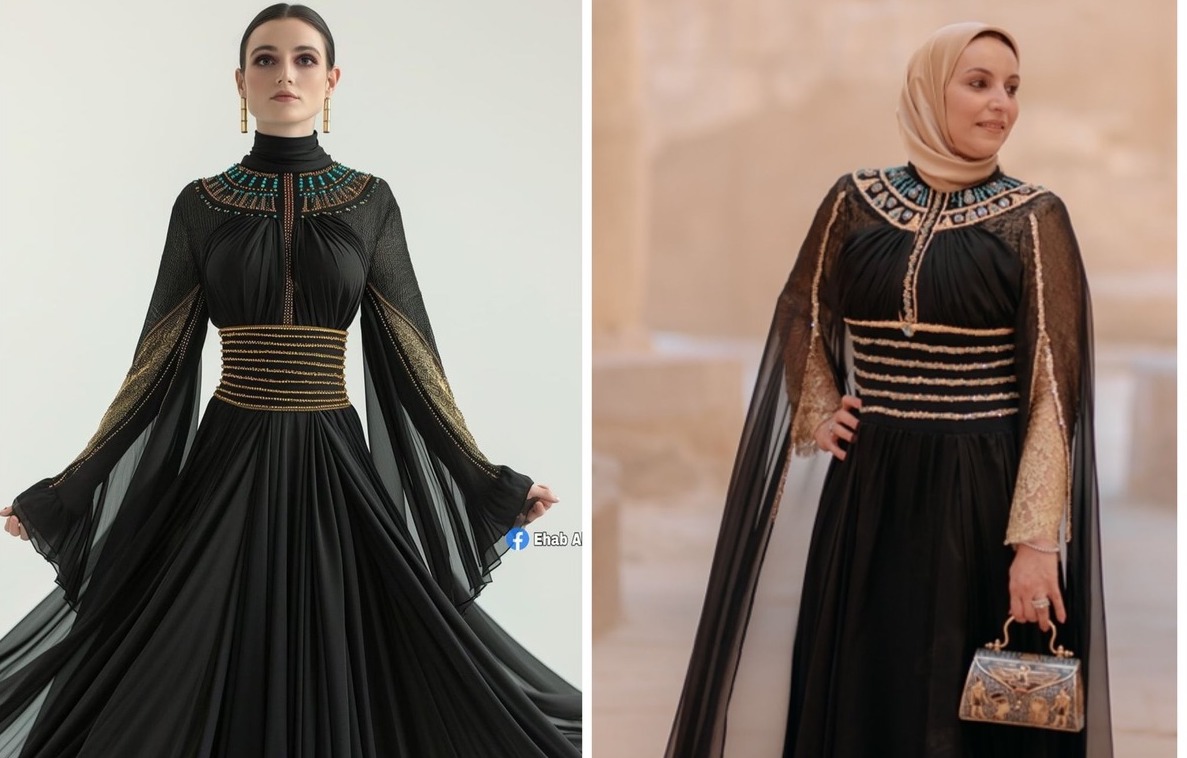



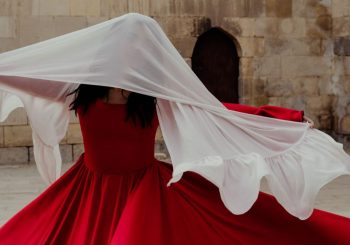
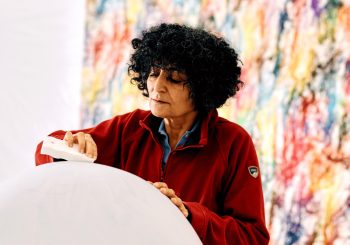
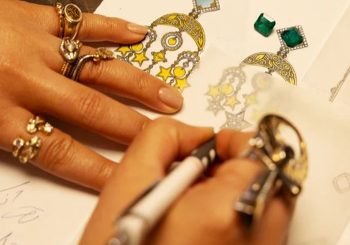
Comments (0)